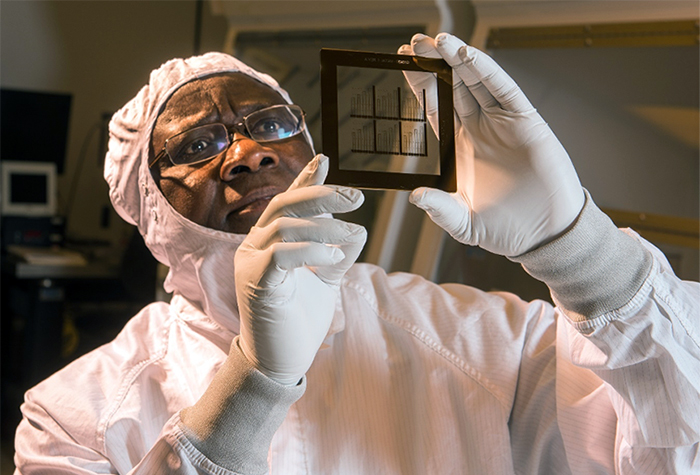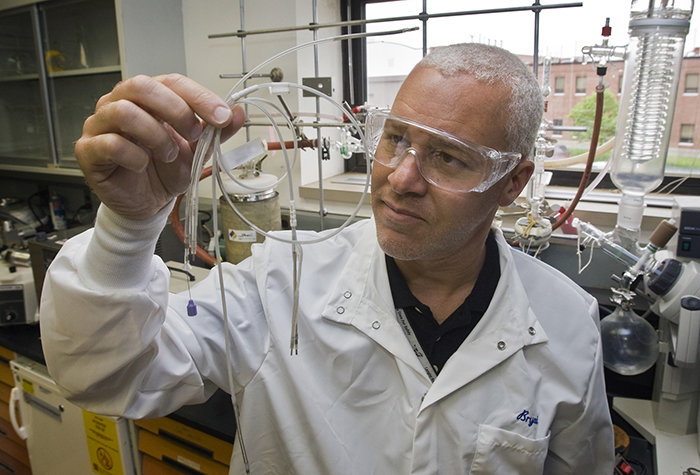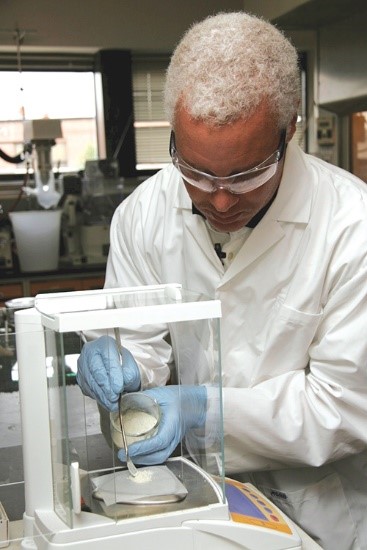
In honor of Black History Month, we invite you to join us at Technology Transfer in celebrating some of the most inspiring, pivotal black leaders in the fields of engineering, science, and ongoing innovation.
Dr. Robert S. Okojie, Ph.D.

Dr. Robert S. Okojie is a distinguished scientific leader in the world of microelectromechanical systems (MEMS) and stands as a beacon of innovation. With a career spanning over two decades, Dr. Okojie has solidified his position as a leading expert in silicon carbide-based MEMS, particularly in extreme environments.

Dr. Okojie was born and raised in Barkin-Ladi, Plateau State, Nigeria. After graduating from New Jersey Institute of Technology in 1991 and 1993 for his B.S. and M.S., he earned his Ph.D. in 1996 for electrical engineering. In 1999, Dr. Okojie embarked on his journey with NASA Glenn Research Center in Cleveland, immersing his work in the silicon carbide research group.
His groundbreaking work has resulted in over 20 patents focusing on high-temperature devices, including over 50 peer-reviewed papers enriching the scientific community’s understanding of his field. His expertise has not gone unnoticed, earning him prestigious accolades such as the NASA Abe Silverstein Medal for Research in 2009, the Glenn Research Center Distinguished Publication Award in 2012, and a 2020 induction into NASA’s Inventor’s Hall of Fame.

Acknowledged as the National Technical Association’s Scientist of the Year in 2002, Dr. Okojie’s exceptional accomplishments have been lauded repeatedly. Dr. Okojie’s commitment to advancing MEMS technology for harsh environments earned him the Cleveland Executive Board Wings of Excellence award in 2007.
Dr. Okojie is currently working as a research electronics engineer at NASA’s Glenn Research Center.
Dr. Robert G. Bryant, Ph.D.

Dr. Robert G. Bryant is a highly respected chemical engineer whose contributions to both research and management expand beyond more than 30 years. As a child, he was resolute that he was “not going to let other people determine who and what he should be” and continued to advance his skillsets despite the setbacks he faced. Since then, he has cemented his place in the scientific community by lending skills in polymer science for several patents and publications.
Dr. Robert G. Bryant was born in Chicago, Illinois. He went on to graduate from Valparaiso University with a B.S. in Chemistry, an M.S. from the University of Akron, followed by a Ph.D. from Stanford University in polymer science in 1990. During that period, NASA granted Dr. Bryant with a Graduate Student Research Fellowship to encourage his impressive research in polymer science. Upon graduation, he started his journey with NASA Langley Research Center to continue his groundbreaking research and achieved many accolades along the way.
His incredible contributions to science have resulted in more than 30 U.S. patents, over a dozen foreign patents, and more than 100 technical publications. In addition, he has also been widely recognized for his U.S. patent, LaRC-SI, which is a thermal plastic that possesses amazing adhesive and dielectric properties suitable for many potential applications. On top of that, Dr. Bryant’s hard work in his field earned him numerous prestigious awards, such as being inducted into NASA’s Inventors Hall of Fame in 2023, the National Inventors Hall of Fame, and featured in notable news articles such as The Daily Press.
Dr. Bryant is currently working as a materials scientist at Langley Research Center.





